|
John Tyman's Cultures in Context Series NEPAL |
|
|
|
609 - 645 |
|
John Tyman's Cultures in Context Series NEPAL |
|
|
|
609 - 645 |
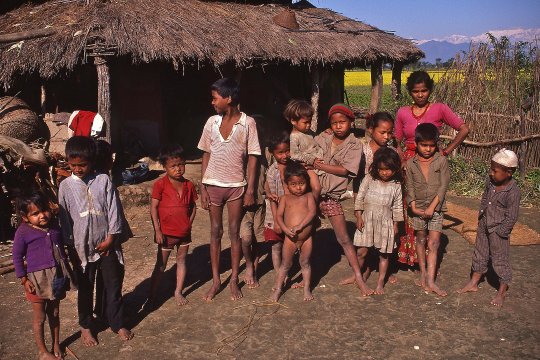 |
| 609. For those living on the land the pattern of daily life was similar in many ways to that in the hill country ... in a life-long struggle to feed and clothe one’s family. [Video Extract 19] |
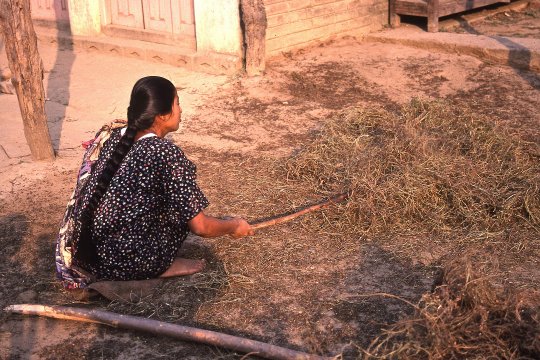 |
| 612. Dhal was threshed here, and then winnowed prior to use. |
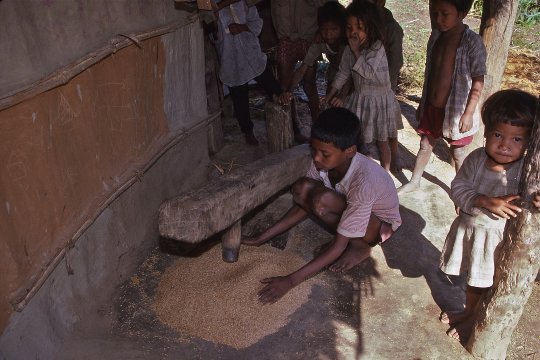 |
| 613. Rice was polished using the same simple foot-powered mill as in Ramja Thanti. |
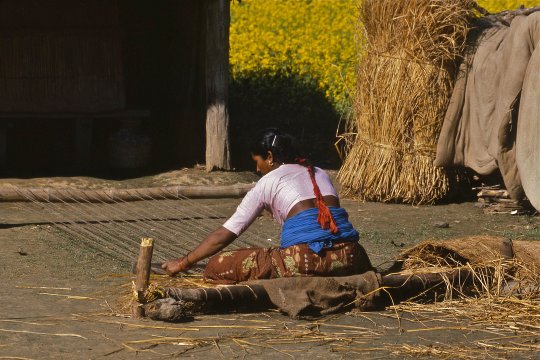 |
| 614. And mats and screens were woven here using rice straw. |
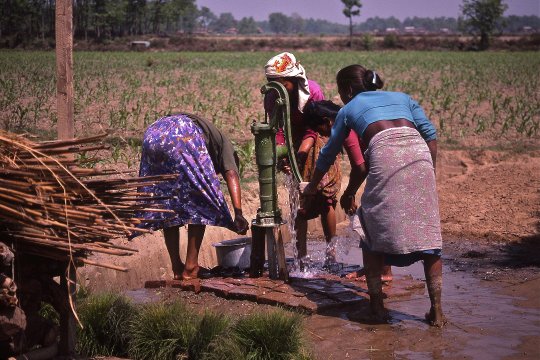 |
| 615. On the alluvial plains of the Terai most water for domestic use came from under the ground and was raised by a pump. |
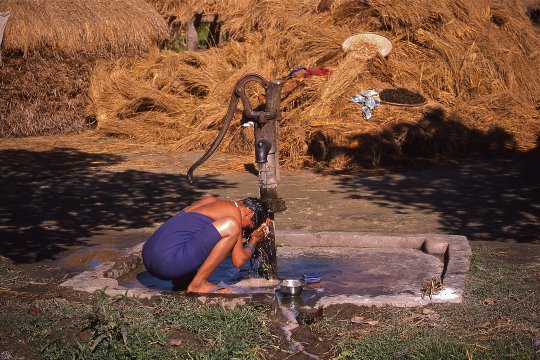 |
| 616. As in the hill country, this was not only their source of drinking water but also where people came to wash themselves and their laundry. |
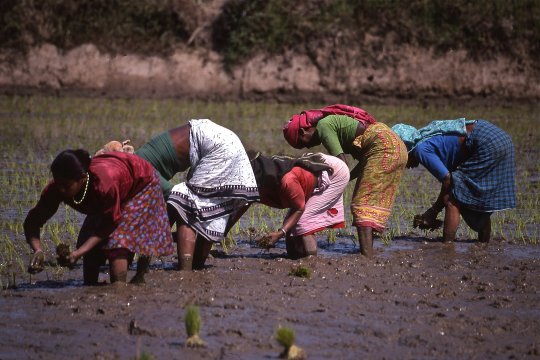 |
| 617. Transplanting rice seedlings is backbreaking work wherever it is done. |
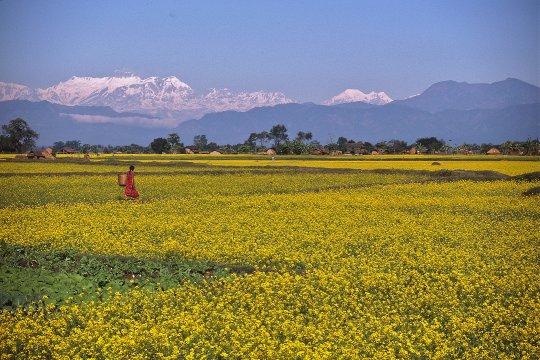 |
| 618. But on the properties of large landowners their workers had to contend with fields far larger than any they had seen before. (Mustard in flower) |
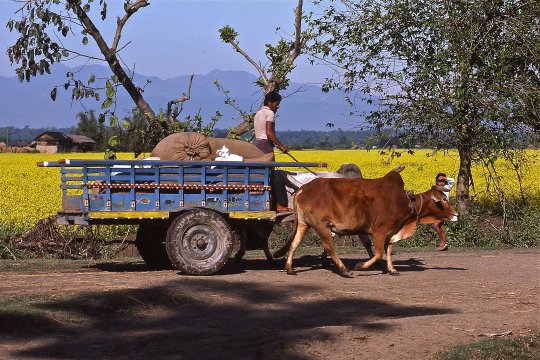 |
| 620. To transport the produce of their employers they still used oxen, but the quality of the carts which these pulled reflected the wealth of their owners. |
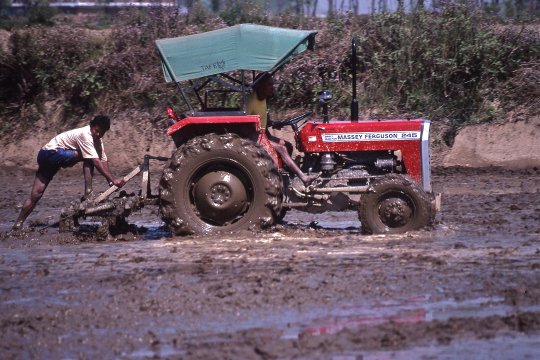 |
| 621. And a few men now got to drive tractors -- sometimes on the roads but mostly in the fields. |
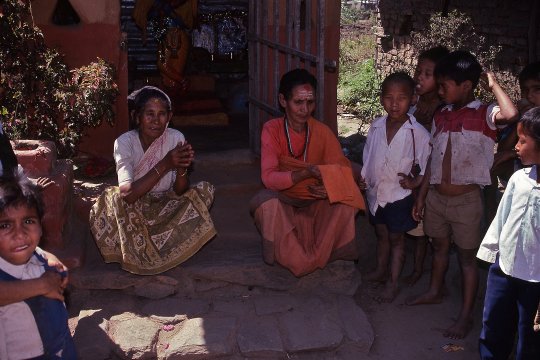 |
| 624. Though women still visit shrines like this, few men do so today -- just as women outnumber men in most churches in Europe and North America. |
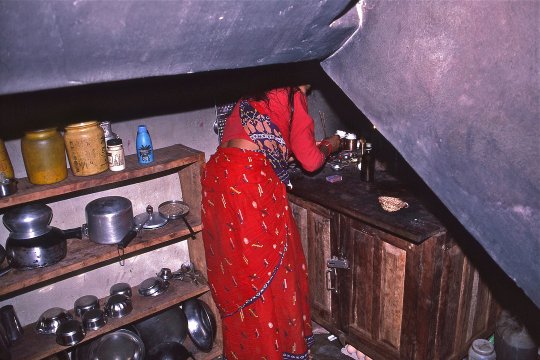 |
| 626. Her other shrine, as usual, was indoors close to the fire (which is itself sacred). There was very little room here under the stairs. |
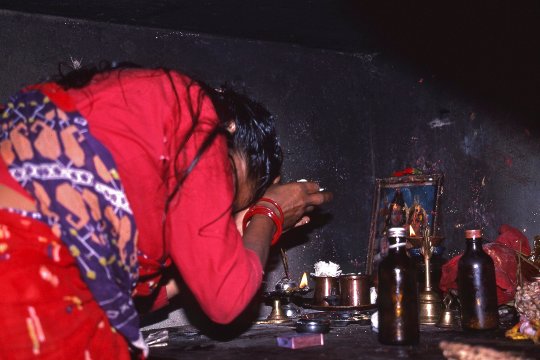 |
| 627. But on top of her cupboard she had arranged the artifacts essential for daily worship -- pictures of gods, a source of light and heat, and puja dishes etc. |
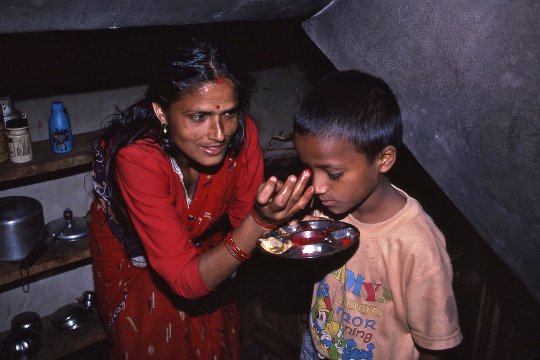 |
| 628. When she had finished praying Bidhya would apply a vermillion tika to the foreheads of each of her sons. |
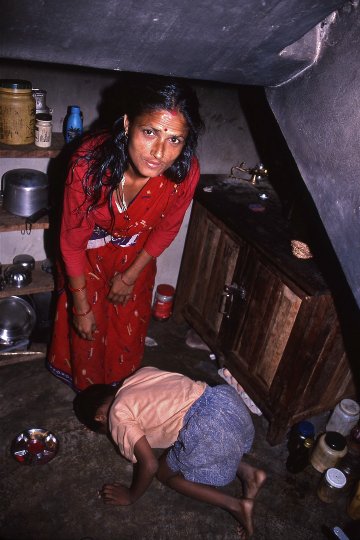 |
| 629. They would then bow before her and touch her feet with their foreheads -- as expected of Brahman children. When she marks her daughter’s forehead, though, Bidhya bows before her instead. |
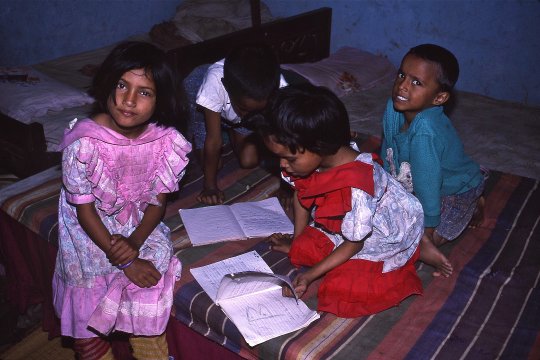 |
| 632. While their mother does the cooking and Gopal prepares for the day’s teaching, the children will finish off their homework and/or dress up and play. |
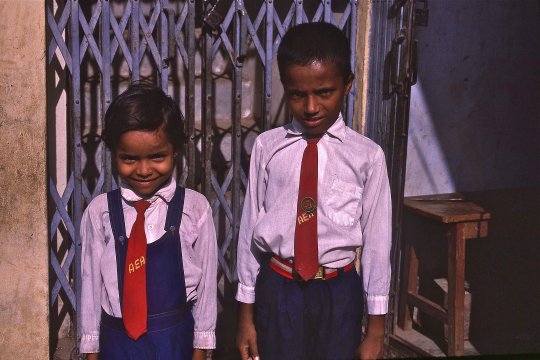 |
| 633. Both Binod and Gita attend private schools and must now wear uniforms. |
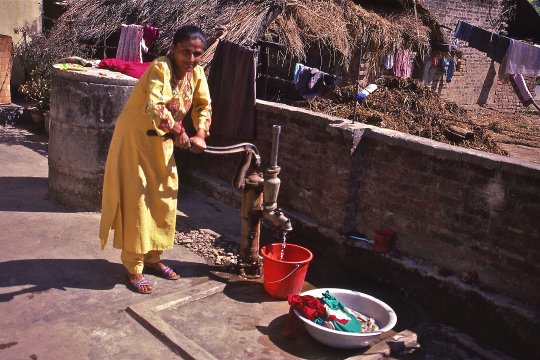 |
| 635. During the day Bidhya will work around home. There will be more laundry to do and she will also help keep the roadside clear of rubbish. [Video Extract 20] |
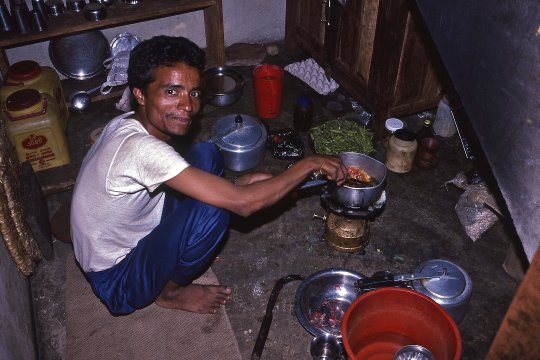 |
| 636. She will be freed from any and all kitchen work, though, during the time each month when she is considered “impure” by reason of her menstruation. That’s when Gopal does the cooking. |
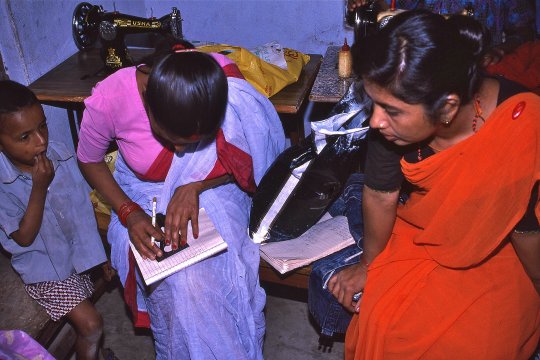 |
| 640. Her youngest son, Bimal, did not yet attend school, so he came with her to classes, and watched his mother learn. |
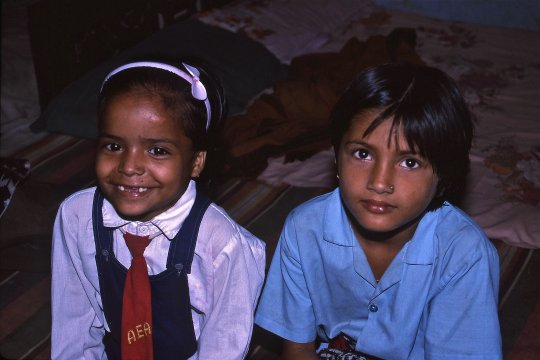 |
| 641. Having no farm chores to do after school, children here have more time for recreation. Girls help their mothers sometimes, but boys usually do nothing but play. [Video Extract 20] |
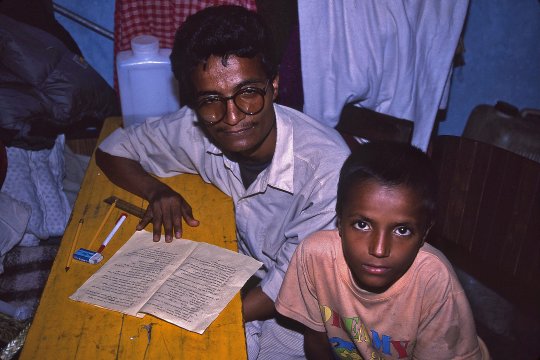 |
| 642. With encouragement from parents, when they get home children may start on their homework, but with the benefit of electric lights here they can leave this till later. |
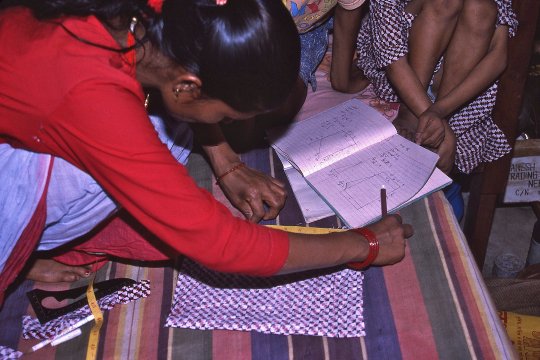 |
| 643. Bidhya will have homework of her own to do ... practising the skills she acquired during the day. |

![]()
Text, photos and recordings
by John Tyman
Intended for Educational Use
Only.
Contact Dr. John Tyman at johntyman2@gmail.com
for more information regarding
licensing.
![]()
www.hillmanweb.com
Photo processing, Web page layout,
formatting and hosting by
William
Hillman ~ Brandon, Manitoba ~ Canada